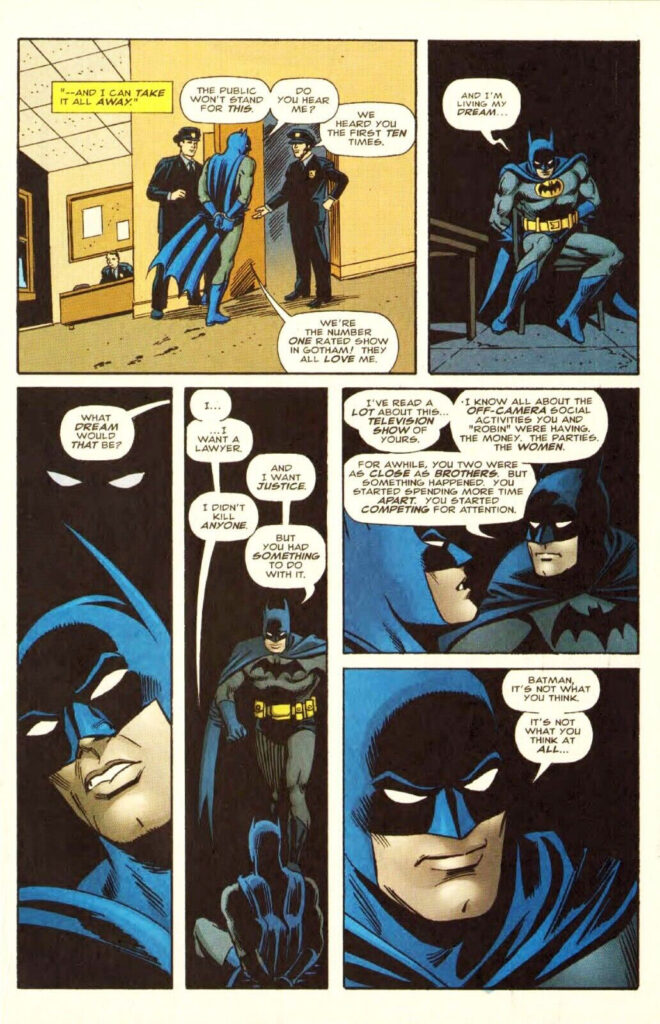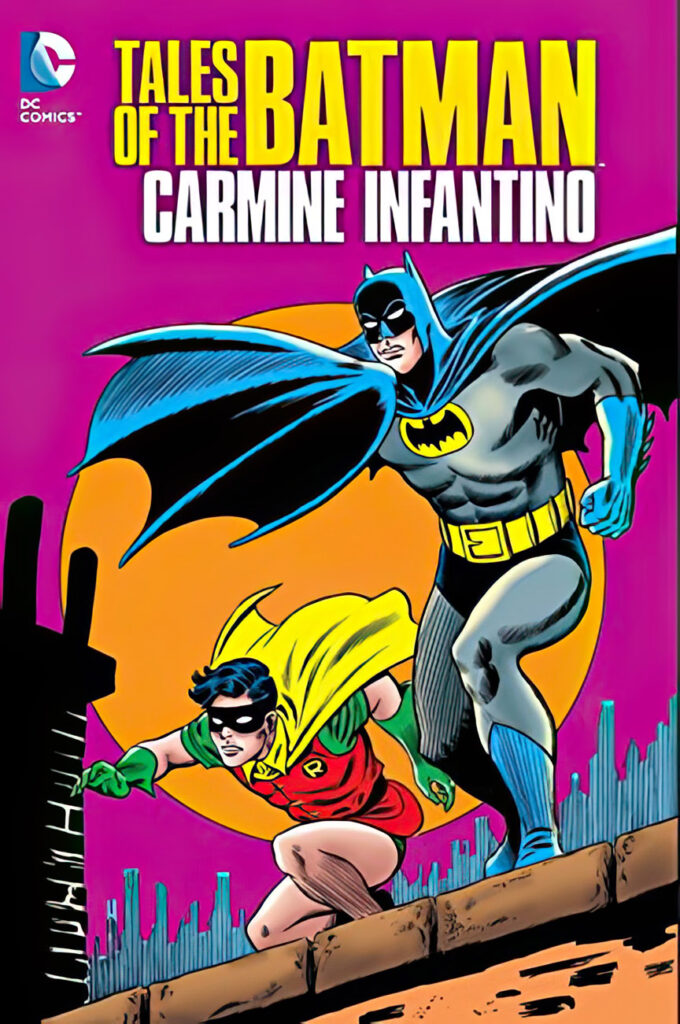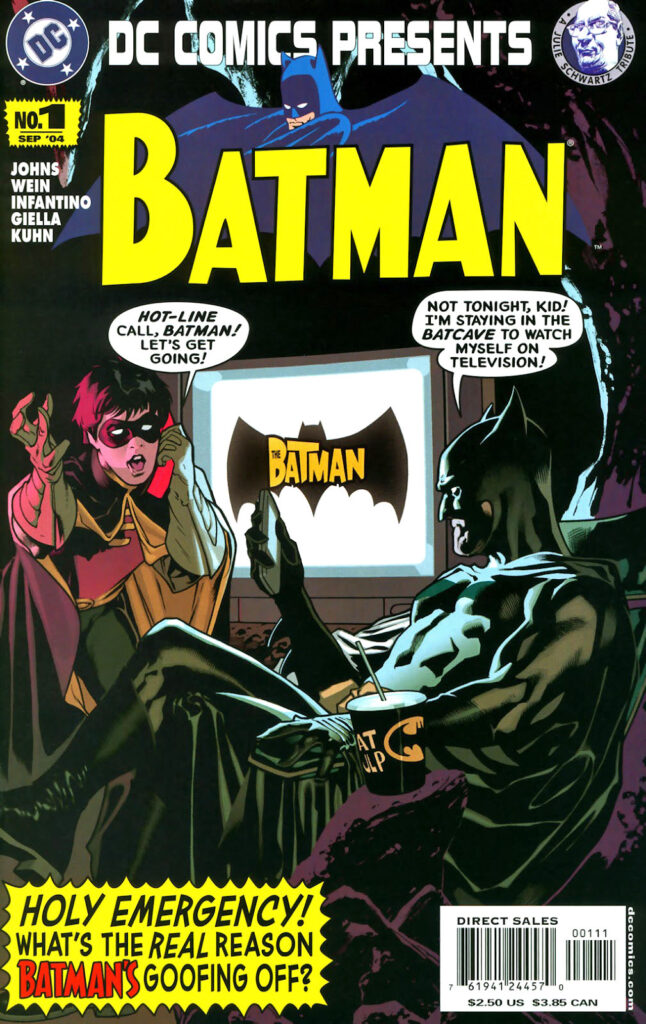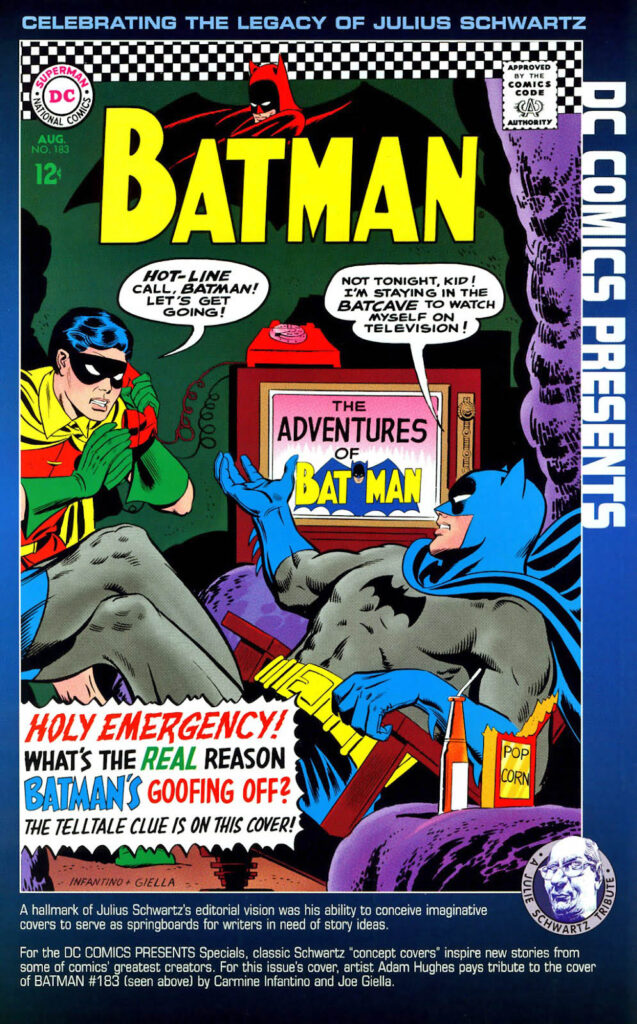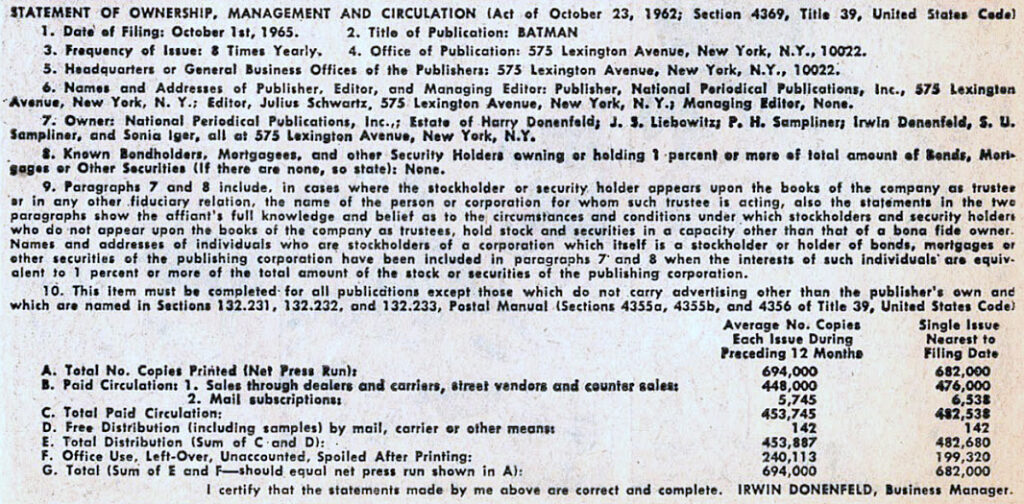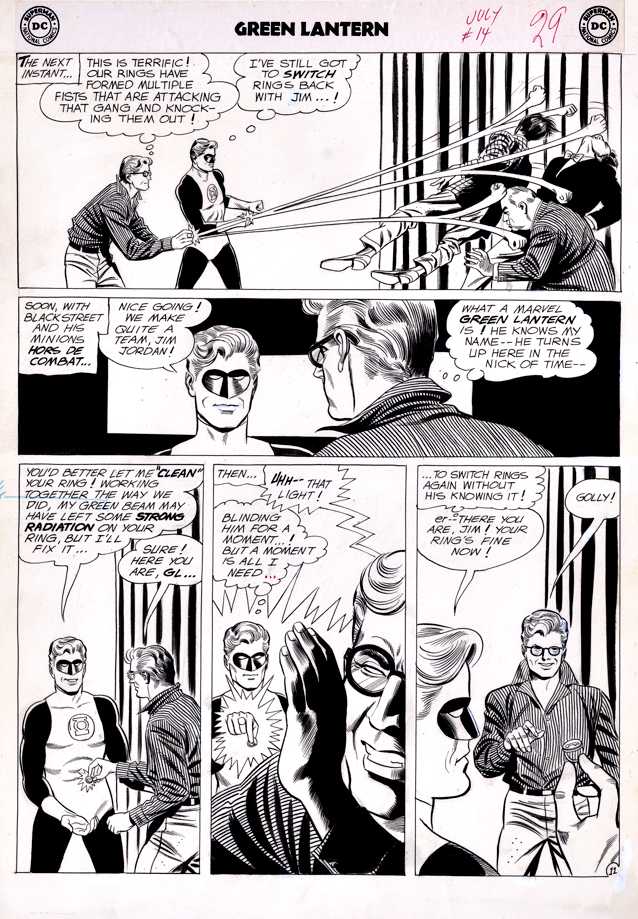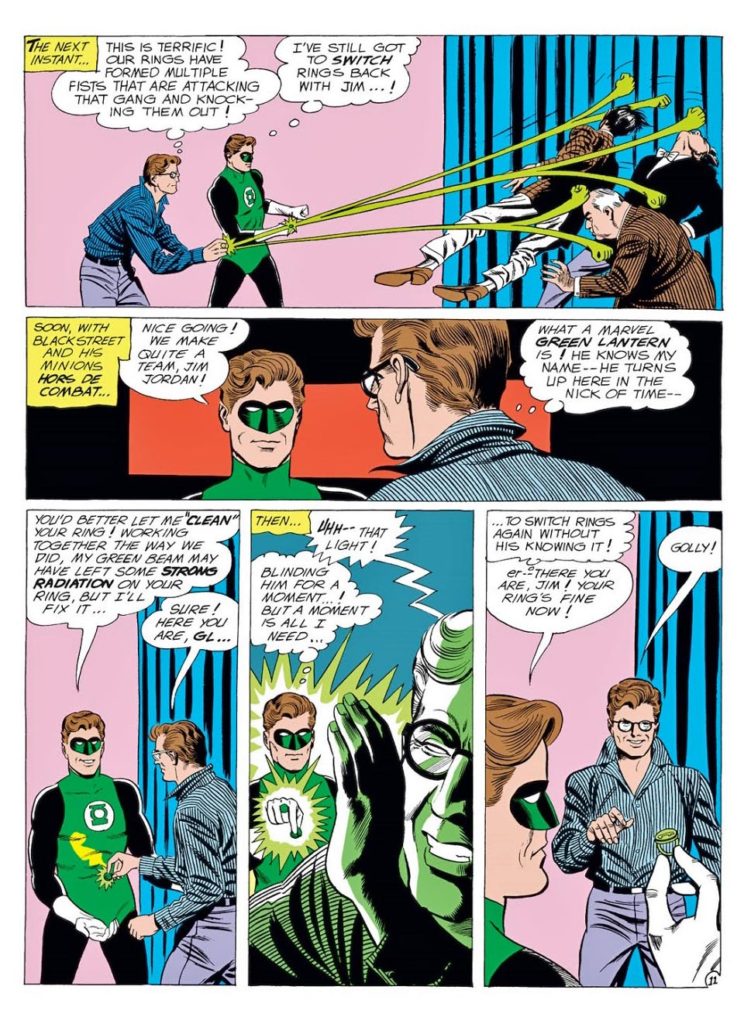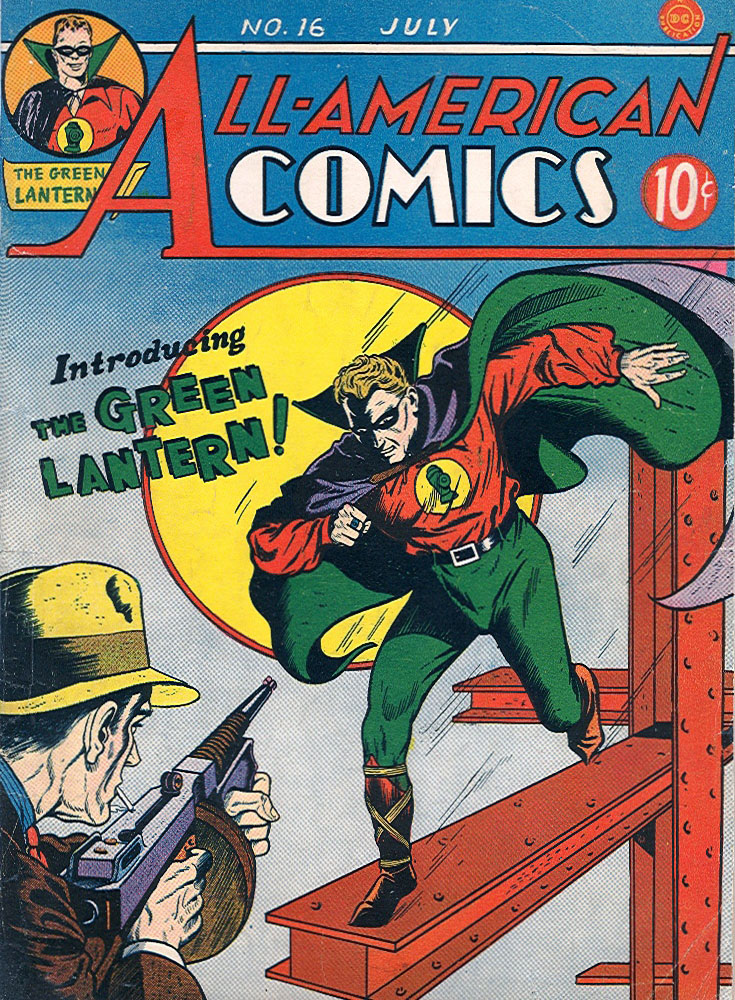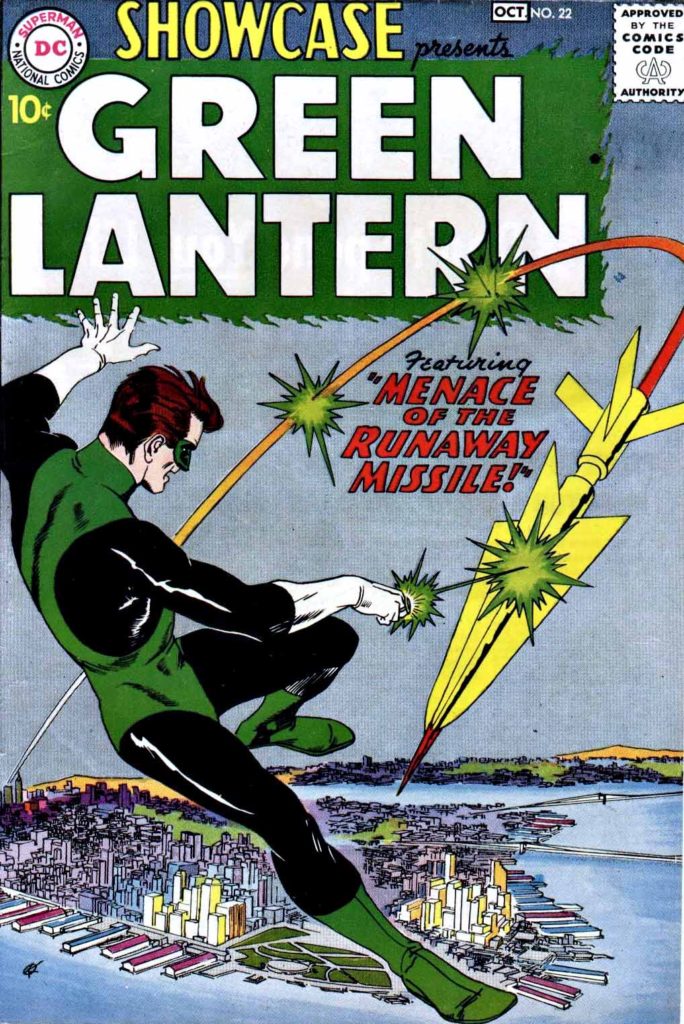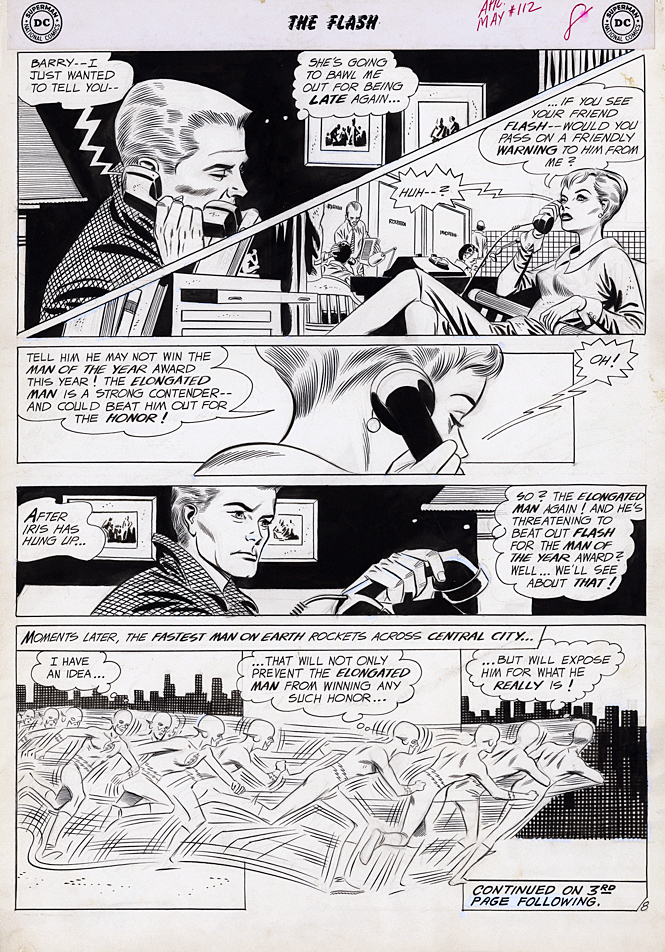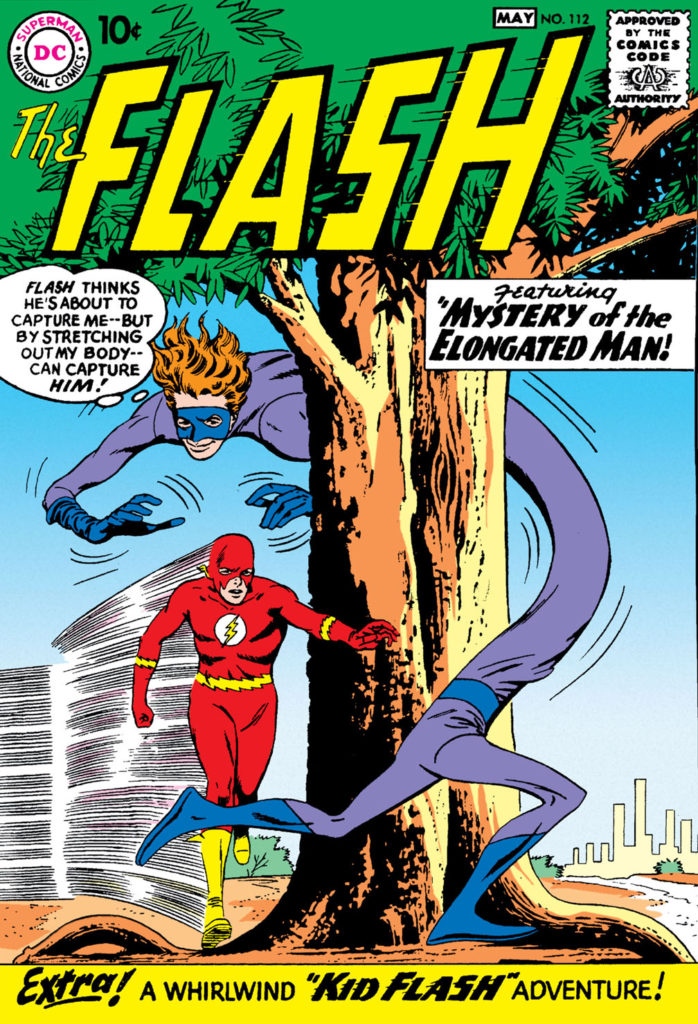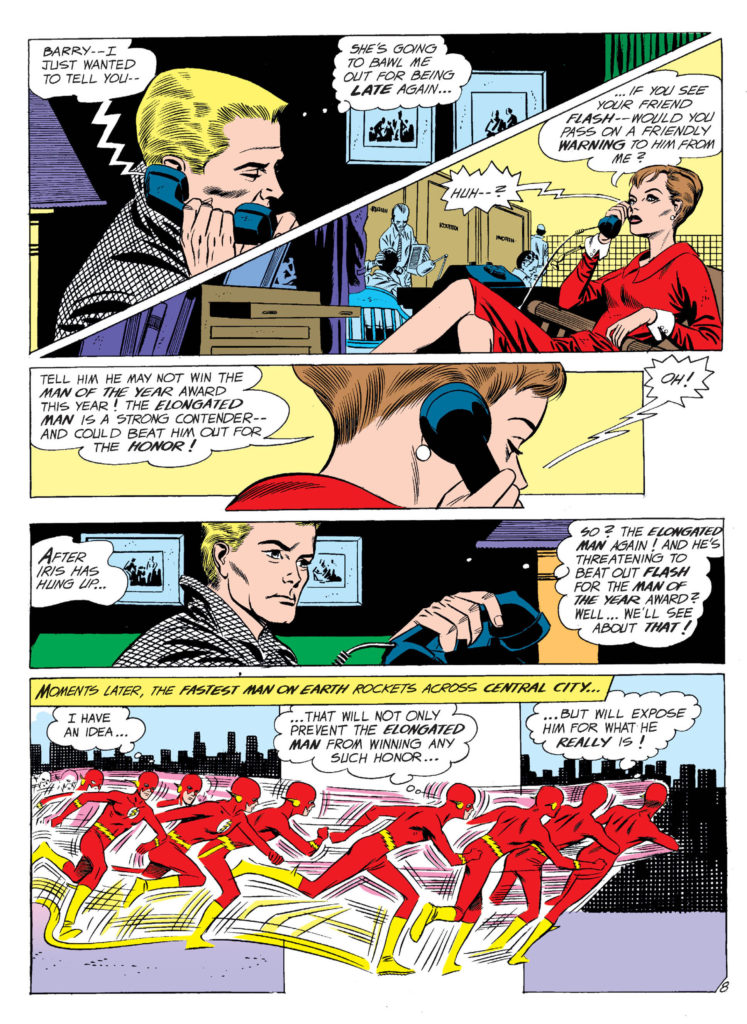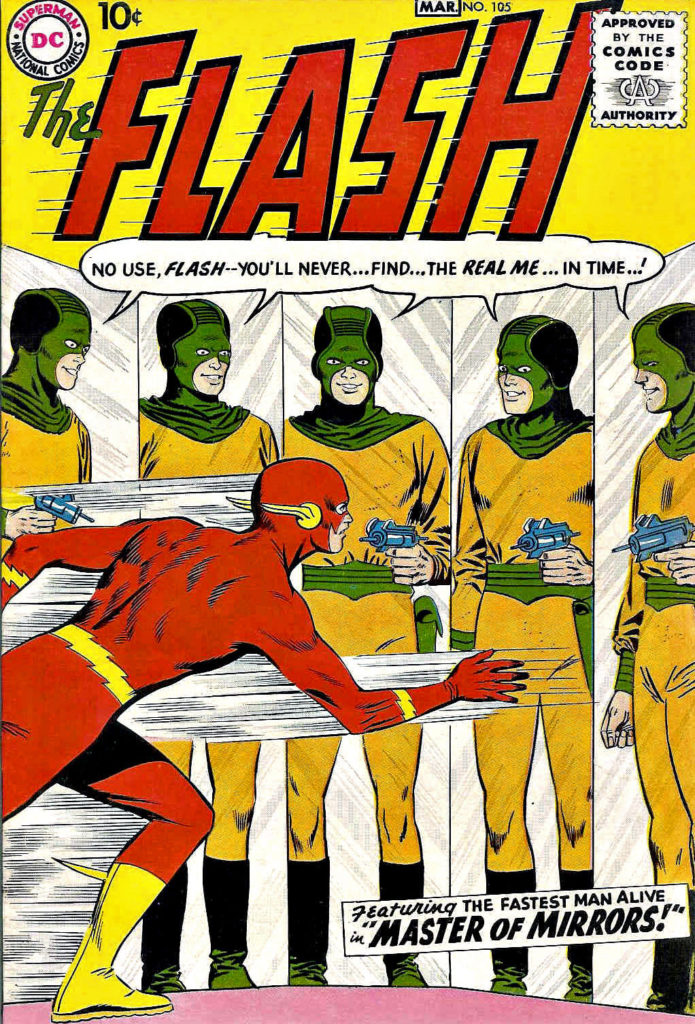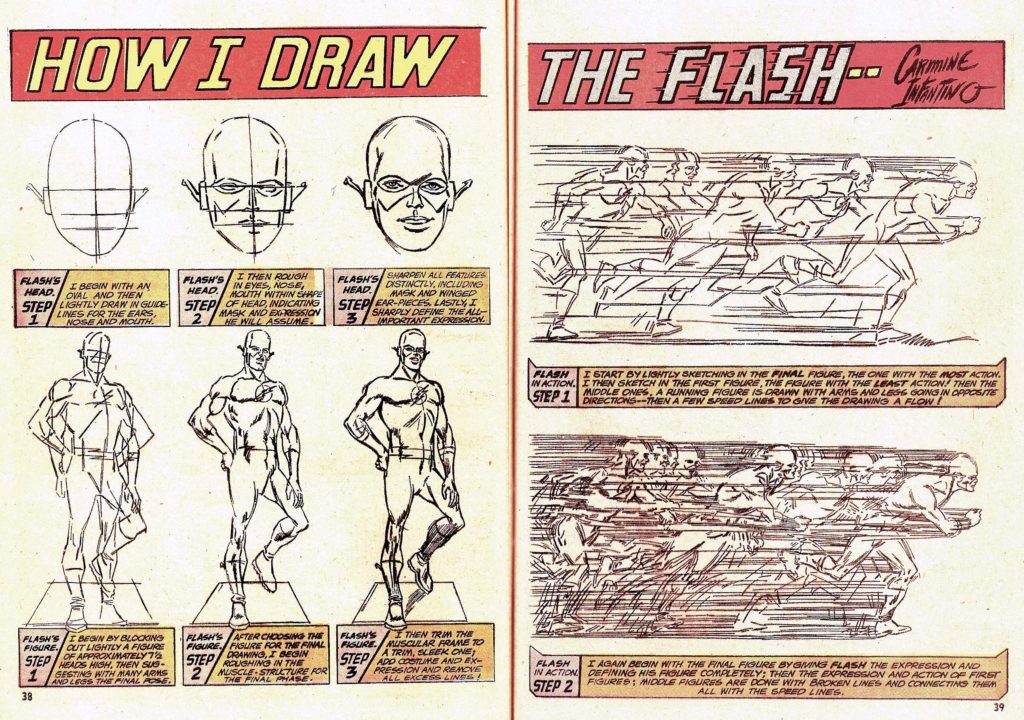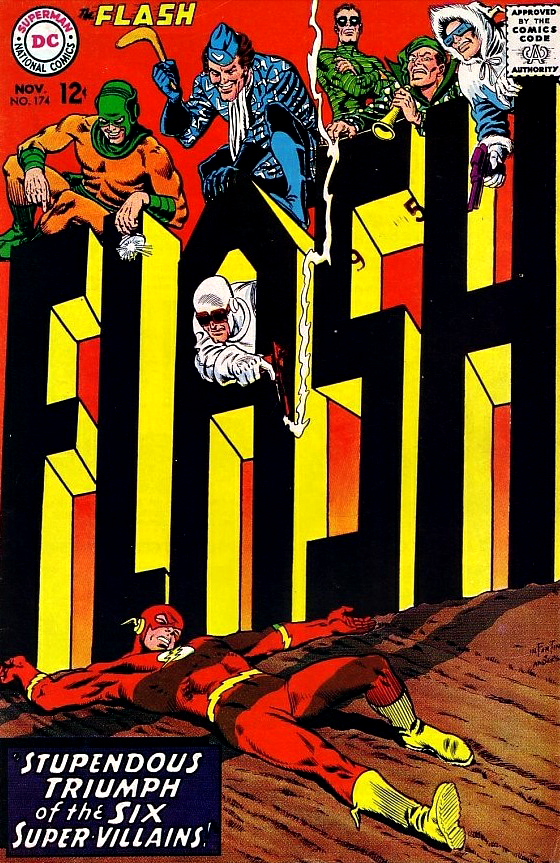Carmine Infantino & Joe Giella — Batman Of Two Worlds
DC Comics Presents: Batman #1, September 2004
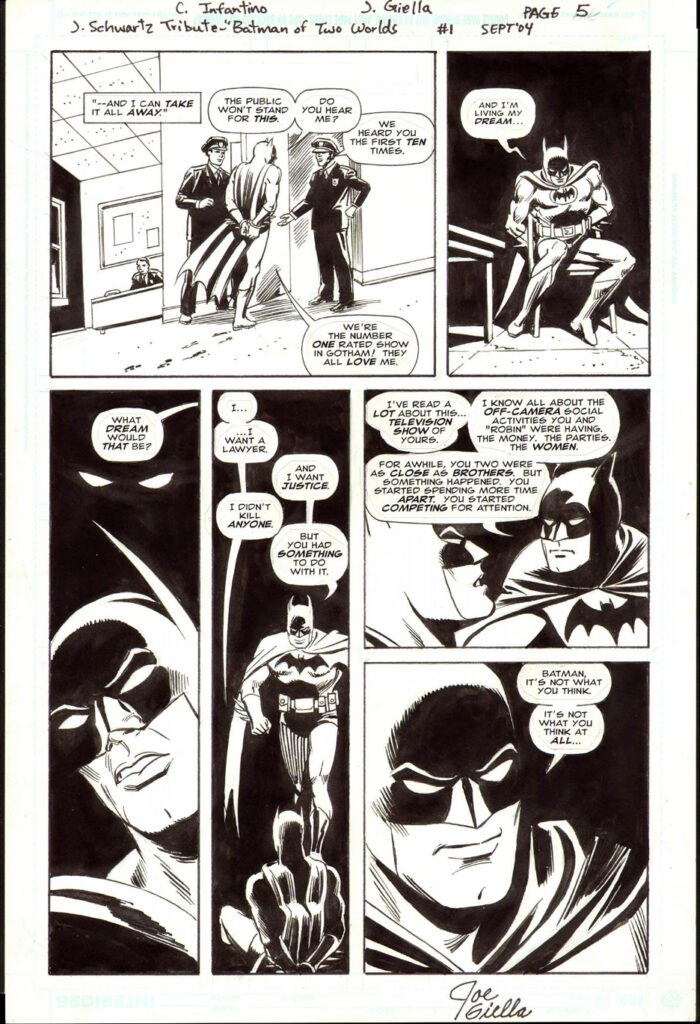
Batman meets… Batman?
In this goofy, but fun 2004 comic tale, why not? (It’s a tribute to DC Editor Julius Schwartz who died earlier that year.)
It’s the final published Carmine Infantino and Joe Giella Batman artwork (story by Geoff Johns) and this cool page features both the “real” Batman and the TV version.
A nice pick-up from fellow collector Steve Lipsky.
I apparently missed these Schwartz tribute comics when they first appeared 20 years ago, so now I’m going down that rabbit hole. (There were eight one-shot issues, and they’ve never been collected together.) This specific Batman one-shot does however appear in the 2014 Infantino Batman hardcover collection.
